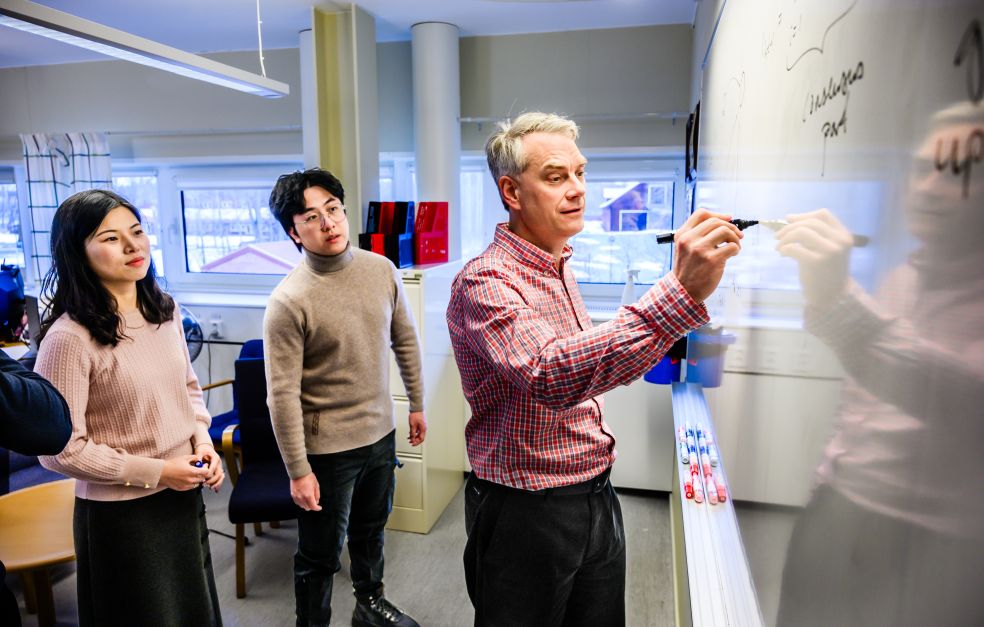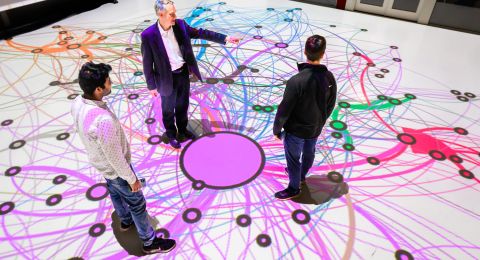
Project Grant 2022
Turning the air into an AI computer
Principal investigator:
Professor Erik G. Larsson
Co-investigators:
Linköping University
Yurii Malitskyi
KTH Royal Institute of Technology
Carlo Fischione
Mikael Johansson
Institution:
Linköping University
Grant in SEK:
SEK 30,200,000 over five years
Data traffic on our mobile networks is expected to have more than trebled by 2030. Much of the increase will be due to progress in AI and machine learning, and in particular various AI-supported VR and AR solutions.
“Even now mobile networks are basically full of traditional traffic. Operators deal with this by setting up more base stations, sited closer and closer together. But this approach also adds to the operating cost, for both technology and service,” explains Erik G. Larsson, who is a professor at Linköping University.
A better solution would be to improve our use of the available radio spectrum. But this will require an innovative approach to the design of wireless networks.
Highly interdisciplinary
Larsson is heading a research project funded by Knut and Alice Wallenberg Foundation in which four teams are collaborating on a new approach to the way communication takes place via wireless networks. The project is highly interdisciplinary, combining applied mathematics and optimization, wireless communication and machine learning.
“We have managed to put together a team with a very broad range of expertise. We complement each other extremely well.”
Together they aim to find better ways of managing the growing quantities of data on mobile networks. Larsson exemplifies this with the way we currently use different language models to write on our mobile phones. The language model suggests words based on statistical models that are trained collectively by all mobile users. Every time we choose a certain word instead of another, information is transmitted to the cloud to improve the model’s predictive ability.
Text processing does not involve particularly large amounts of data. But as we move towards virtual and augmented real data quantities rise dramatically. Online cameras are used for everything from self-driving cars to security and navigation systems used to identify objects and people. Images and video streams are sent to cloud solutions that use various forms of artificial intelligence to identify content.
“These huge quantities of data could potentially overload wireless networks,” Larsson says.
The researchers aim instead to find a way of sending only the data the models need to become better, not the actual images or video streams.
Changing communication itself
As well as ensuring that the right kind of data is sent on networks, the researchers intend to change the way mobile devices communicate. Most mobile traffic currently requires devices to simply share a given time or space on the network. Simply put, ten mobile phones can share a second between them, each having one-tenth for their communication. Alternatively, the radio spectrum itself is split up into ten sub-bands for each device’s traffic.
“We’re taking a closer look at ways of enabling all devices to communicate simultaneously.”
The physical principle on which the idea is based is called “superposition.” This is a fundamental principle in wave theory, stating that when two or more waves meet, their effect is combined. The principle is already used in mobile networks to increase transmission capacity, improve access and minimize disruption. The researchers plan to use it to capture updates collectively once they have been added to each other. In other words, the sum of the updates will be gathered.
“We need to find out what can actually be achieved, where nature’s fundamental boundaries lie, and under what conditions our new approach works better than traditional methods,” Larsson says.
The emphasis of the project is on developing new methods for distributed AI and machine learning, and to find a way the methods can work with the new ways of communicating, with particular focus on the 6G network.
Security essential
The project must also address matters of privacy and security. The end result must not create a risk of private data being shared or redistributed from individual users. It is also essential to ensure that new communication solutions do not offer an opportunity for data manipulation along the way.
“The question is how to create algorithms that share just the right amount of information – enough to train the models, but not so much that they reveal information about the user.”
If the project is successful, the new methods may influence the design of next generation mobile networks, as well as other forms of wireless network.
“Naturally we hope our research is successful, but we also want to increase knowledge through the researchers and PhD students involved in the project,” adds Larsson.
Text Magnus Trogen Pahlén
Translation Maxwell Arding
Photo Thor Balkhed




